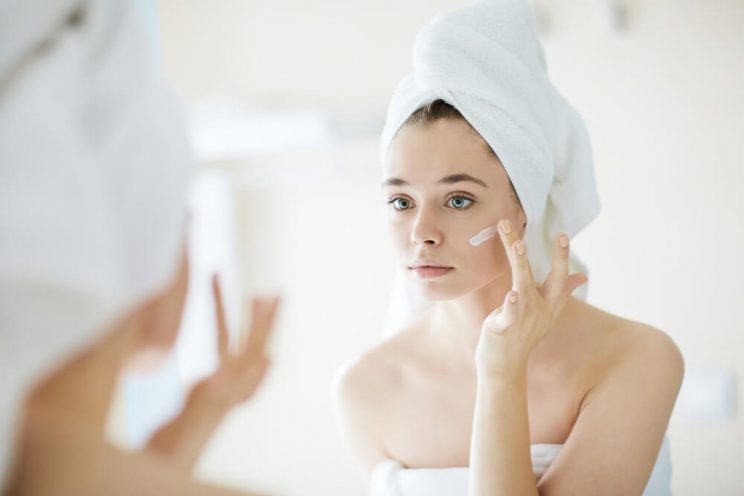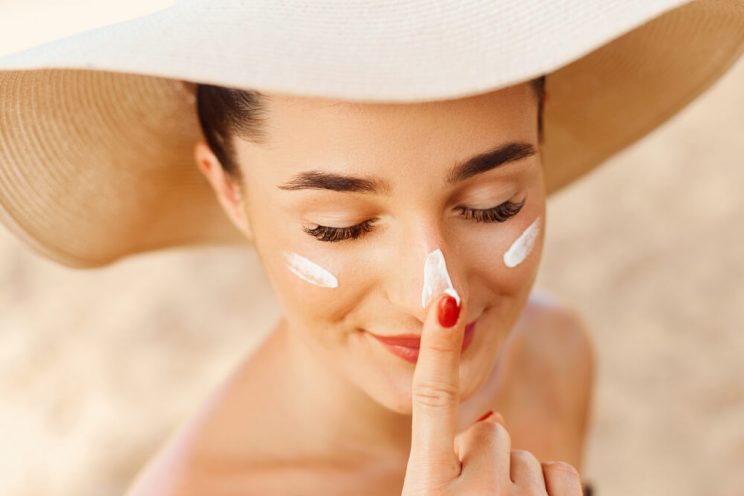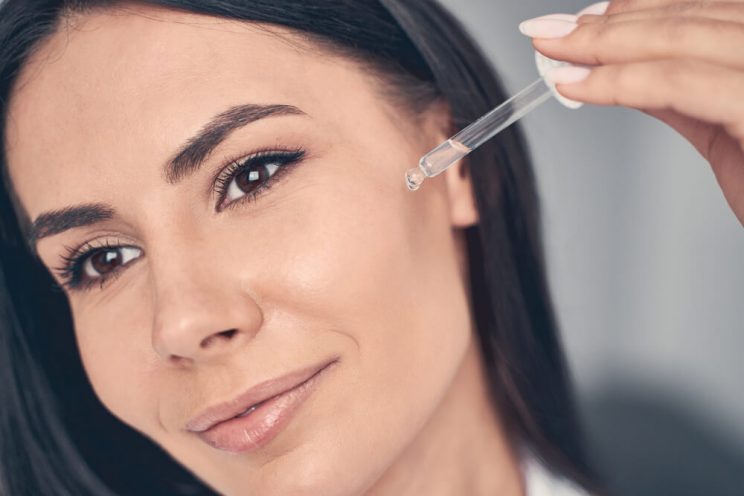If you’re looking for skincare tips that you can really trust, a dermatologist is a person to ask. They hold a treasure trove of skincare secrets and hacks that can truly transform how your skin looks and feels.
While nothing quite beats having a dermatologist of your own to turn to, don’t worry if you don’t have one. We’ve rounded up 12 snippets of advice that every dermatologist would want you to know.
You Are What You Eat
Although it may sound cliched, it couldn’t be more true…you really are what you eat.
Your diet is reflected in your skin – eat well and your complexion will be clearer, brighter, and smoother, but consume a poor diet on a regular basis and you’ll be dealing with a multitude of skin conditions.
You probably already know which foods are good for you and which ones aren’t. Those same foods that give your body a healthy boost, such as fresh fruits and vegetables, benefit your skin too.
Whole grains, nuts, and seeds work wonders as well, as does fatty fish, such as salmon and mackerel.
The more that you can improve your diet, the better your skin will look, which is why this is often one of the first things that a dermatologist will discuss with a new client.
Give New Products Time to Work

People often ask dermatologists why a new product isn’t working for them, even though they have only been using that product for a few days.
Yes, some products may have instant results (such as the Venofye Iron Bee Skintight Syringe), but most formulas take more time to work.
How long should you wait before expecting to see proper results from a new product?
It will take at least a month before you notice a significant difference. This is because it takes the skin, on average, 30 days to produce new skin cells and send those to the surface of your skin. Many ingredients work at a deeper level, so you’ll need to wait until those fresh skin cells have been pushed upwards before you’ll notice results.
In some cases, you’ll need to wait even longer. This is especially true of anti-aging products – your skin takes about two to three months to produce new collagen fibers, meaning that you’ll need to wait that long to see a difference.
Learn How to Layer
Another reason why some skincare products don’t work in the way that they should is that they’re not being used correctly.
Dermatologists find that first-time clients often don’t understand how to layer their skincare products. This may not seem important, but it makes a huge difference in the way in which that product works.
So, how should you be layering your skincare?
Well, as always, a cleanser comes first. After this, apply your products going from lightest to thickest. For example, after your cleanser, apply a toner, then a serum, and then a moisturizer.
If you apply a thick and heavy product first, and then follow this up with a much lighter and thinner product, the ingredients in the second product won’t be able to penetrate through the thick barrier created by the first. This means that they won’t actually reach your skin, and therefore won’t be making a difference to your complexion.
Sleep on Your Back
As soon as a person walks into a dermatologist’s office, the dermatologist will usually be able to correctly guess that person’s sleeping position.
Okay, so “guess” may not be the right word. After all, it isn’t really a guess if the answer is literally all over your face.
Wondering what we mean by this?
Well, when your skin rubs against your pillow, it causes distortions and wrinkles. The more you favor a certain sleeping position, the more obvious those lines and creases will be.
You may not be able to see them yourself just yet, but an expert that’s trained in the skin will instantly recognize them. It also won’t be long before those sleep wrinkles deepen and become visible to you too.
The best way to prevent this is by adjusting your sleeping position so that you are sleeping on your back. If you find that you keep automatically rolling back over in the middle of the night, place some pillows around you to encourage you to stay on your back.
SPF Really is Everything

Most dermatologists really struggle to get some of their clients to understand just how important SPF really is.
One method they often use is to share this fact:
Did you know that up to 80% of facial aging is caused by sun exposure? This means that everything from fine lines, wrinkles, sagging skin, dark spots, loss of texture, and so much more could have been prevented if you had practiced proper sun protection from an early age.
Don’t worry, it’s not too late to start.
Becoming more diligent about sunscreen now, no matter your age will still make a huge difference to your skin.
This means wearing sunscreen every single day throughout the year. Even if it’s cloudy outside, sunscreen is still a must, since the sun’s rays can penetrate through thick clouds.
Think you’re safe because you plan on spending the day indoors?
Think again – just like with clouds, UV rays also pass through glass. In fact, glass can often magnify the damage that your skin experiences. This means that simply sitting by a window or driving in your car still exposes your skin to the harmful effects of UV rays.
You’re Probably Not Using Enough Sunscreen Each Day
Since we’re on the topic of sunscreen, let’s take a quick look at how much sunscreen you actually use with each application. According to dermatologists, chances are that you’re not using enough.
In order to receive the amount of protection printed on the label, you need to be applying about 2mg of sunscreen for every 1cm square of skin. In simple terms, this means about a nickel-sized dollop for your face. If you’re covering your neck and shoulders too (which you should be), then you’ll need about two tablespoons of sunscreen, which is equivalent to a full shot glass.
It doesn’t matter how diligent you are about sunscreen if you aren’t actually using enough of the product, so pay attention to this the next time you’re slathering on that SPF.
Everyone Needs to Moisturize
If you’ve got dry or sensitive skin, then moisturizing is probably something that you do pretty religiously.
However, dermatologists often encounter people with oily skin who choose not to moisturize. Since their skin is already oily, they believe that using a moisturizer will only make things worse.
This is definitely not true, and here’s why…
As you know, oil is very different from water. The purpose of a moisturizer is to increase your skin’s moisture levels, meaning the amount of water that each skin cell holds. Water is essential for so many of your skin’s functions – without enough of it, your skin will suffer.
It doesn’t matter how oily your skin may be – your skin cells still need water in order to thrive.
In fact, if your skin cells are lacking water, this can often stimulate the sebaceous glands into producing even more oil. The skin tries to overcompensate for its dehydration with the extra oil, even though oil is no replacement for water.
Still, worried that your moisturizer will leave your skin feeling oily?
It all depends on the moisturizer that you use. Pick a water-based formula that only contains non-comedogenic ingredients. This means that it won’t clog up your pores, and will therefore be safe to use on oily skin.
Don’t Be Too Hasty in Trying Every New Trend

New skincare trends are constantly popping up, and many of them may tempt you with their promises of eliminating all of your skin concerns.
However, it’s important not to fall for every trend that you see.
It’s true that some may be nothing but beneficial, but many of the trends out there can actually be damaging.
It’s always important to keep your skin type and concerns in mind when trying out any new skincare trends. You should also remember that not every trend needs to be tried – your skin prefers consistency, so once you find a routine that works for you, don’t stray from it too much.
Have That Mole Checked Out ASAP
How often do you check your skin for new moles?
There’s no official rule for this, but those who already have several moles, and who also have fair skin that’s frequently exposed to the sun, should be checking their body at least once a month.
Use a full-length mirror to do this, ensuring that you are able to see even those harder-to-reach areas. Make sure that you literally check every inch of your skin, including between your fingers, your underarms, and the soles of your feet.
If you notice a new mole, or if you think that one of your older moles has changed in size, shape, or color, then it’s important to have this checked out by a dermatologist as soon as possible.
Tanning Beds Aren’t a Safer Alternative to Tanning Under the Sun
There’s a myth out there that tanning beds are a safe way to get a healthy tan, and this is something that dermatologists are sick and tired of hearing.
No, that base tan isn’t going to help protect your skin. Any form of a tan, unless it’s one that comes from a bottle, will be causing your skin some serious damage.
It doesn’t matter how well your local indoor tanning beds advertise their services – as soon as your skin starts to darken after being exposed to UV rays, then that shows that damage has taken place. It also increases your chances of developing skin cancer.
The only safe tan is a sunless tan. Fortunately, these are becoming increasingly available with advanced formulas, making them look more natural than ever.
It’s Never Too Early to Start Using Anti-Aging Products

Did you know that collagen and elastin production in your skin starts to decline when you’re just 25?
Both collagen and elastin are key proteins that give your skin its smoothness and firmness. The fewer of these protein fibers you have in your skin, the looser, saggier, and more wrinkled your skin will be.
Once that collagen and elastin start to decline, this only happens more and more with age. It’s important to stop this process as soon as possible, focusing instead on rebuilding healthy protein fibers.
The best way to do this is with anti-aging products. Even if you aren’t yet able to see visible signs of aging on your face, it really is never too early to begin an anti-aging skincare routine. After all, prevention is always better than cure!
Don’t Be Afraid to Customize Your Sheet Masks
Do you struggle to find a sheet mask that properly fits your face?
Here’s a tip that top dermatologists share…
Don’t be afraid to customize your sheet mask to achieve that perfect fit. This could mean snipping through the cheek areas to help flatten the mask against your cheekbones or altering the eye holes to make them fit flawlessly around your eyes.
Just because a sheet mask was purchased in a certain shape doesn’t mean that you shouldn’t customize it – this is what will give you the very best results!
Dermatologists really do know what they are talking about when it comes to your skin. If you ever have any questions or have heard conflicting advice, a reputable dermatologist is always the person to turn to set the record straight.




0 comments on “12 Things Dermatologists Want Everyone to Know”